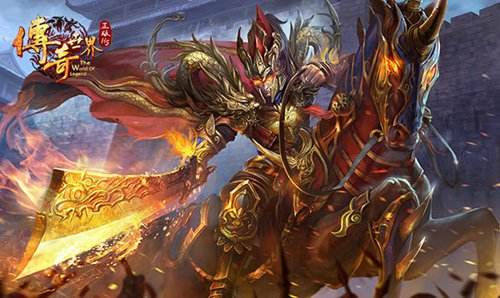◎欢迎参与讨论,请在这里发表您的看法、交流您的观点。
76复古: Exploring Nostalgia in Design, Fashion, and Lifestyle
星期三 2024年9月4日 admin 传奇开服表 76复古 0人
76复古: Exploring Nostalgia in Design, Fashion, and Lifestyle
The term "76复古" translates to "76 Vintage" in English, representing a unique blend of nostalgia that harks back to the styles and culture of the year 1976. This era, characterized by its distinctive pop culture, fashion statements, and design philosophies, continues to resonate in contemporary creations. In this article, we will delve into the various facets of 76复古, examining its impact on modern design, fashion, and lifestyle choices. By thoroughly exploring these themes, we aim to emphasize the enduring appeal of vintage aesthetics that evoke memories of a vibrant time in history.
Examining the Aesthetic Appeal of 76复古

The aesthetic of 76复古 is visually arresting, encompassing a range of colors, patterns, and materials that embody the essence of the 1970s. Bold geometric patterns, earth-toned color palettes, and eclectic decor define this vintage style. In design, one can see these influences in various spaces—whether its a retro diner adorned with red vinyl booths and checkered floors or a contemporary living room featuring furniture with sleek lines and rich woods typical of that era. The revival of these elements in modern settings often presents a nostalgic comfort, allowing individuals to connect with the vibrance and creativity of the past.
Art and graphic design from the 1970s also play a crucial role in the 76复古 aesthetic. Iconic album covers, poster art, and advertising from this time were known for their bold typography and vivid illustrations, often inspired by the psychedelic movement. This art form continues to influence designers today, leading to a resurgence of retro-themed visuals in marketing, branding, and web design. The nostalgia associated with these styles not only enhances visual appeal but also imparts a sense of authenticity and history that modern aesthetics sometimes lack.
The Influence of 76复古 in Fashion
Fashion is perhaps one of the most apparent manifestations of 76复古. Designers and trendsetters often borrow elements from the 1970s to create pieces that resonate with todays consumers. Flared pants, oversized sunglasses, and bold prints are just a few examples that have made a comeback in recent years. Notably, fashion icons like the late David Bowie and Cher, who epitomized the flamboyant styles of this decade, continue to inspire modern fashionistas. The availability of vintage thrift stores and online platforms specializing in second-hand clothing has made it easier for individuals to adopt 76复古 trends personally, promoting sustainable fashion choices while celebrating timeless styles.
The appeal of 76复古 in fashion also introduces a sense of individuality and self-expression. In a world where fast fashion dominates, the unique charm of vintage attire cultivates a strong community among those who appreciate the stories woven into each garment. The diversity of styles—from bohemian to disco—encourages wearers to adapt these vintage influences to their own personal style, fostering creativity and innovation in outfit creation. This fashion rebellion against mainstream trends encourages consumers to embrace their true selves, reflected through their clothing choices.
Embracing 76复古 in Modern Lifestyle Choices
Beyond fashion and design, the 76复古 lifestyle encapsulates a broader trend toward vintage-inspired living. This approach emphasizes the value of craftsmanship, sustainability, and quality over quantity. People today are increasingly turning to vintage markets, antique shops, and estate sales to find unique items that carry a story. The allure of collecting retro artifacts—including vinyl records, vintage cookware, and classic books—reflects a desire to live more intentionally and appreciate the pasts charm.
Incorporating 76复古 elements into daily life can manifest in various forms, from home decor choices that celebrate classic design principles to embracing leisure activities that were popular in the past, such as hosting game nights with retro board games or creating themed parties that echo the spirit of the ’70s. This lifestyle encourages individuals to slow down and enjoy lifes simple pleasures, harking back to a time when social gatherings centered around personal connections and shared experiences rather than digital distractions.
Questions and Answers
Q1: What defines the 76复古 aesthetic in modern design?
A1: The 76复古 aesthetic is characterized by bold geometric patterns, earth-toned color palettes, and eclectic decor that reflect the styles and creativity of the 1970s. It emphasizes a nostalgic comfort and often reintroduces retro art elements into contemporary spaces.
Q2: How has 76复古 influenced modern fashion trends?
A2: Fashion trends from the 1970s, such as flared pants and oversized sunglasses, have made a significant comeback, heavily influencing contemporary styles. Retro fashion allows for individuality and self-expression, encouraging sustainable choices through vintage shopping.
Q3: In what ways can one embrace a 76复古 lifestyle?
A3: Embracing a 76复古 lifestyle can include sourcing vintage furnishings and clothing, enjoying retro leisure activities, and cultivating a more intentional and appreciative way of living that honors quality and craftsmanship.
Q4: Why is there a growing interest in vintage items today?
A4: The growing interest in vintage items stems from a desire for uniqueness, sustainability, and nostalgia. Many consumers appreciate the stories behind vintage objects and the quality of craftsmanship that often outlasts fast fashion items.
Q5: What role do vintage aesthetics play in contemporary branding and marketing?
A5: Vintage aesthetics, inspired by decades like the 1970s, add a layer of authenticity and nostalgia to branding and marketing, making campaigns more visually appealing and emotionally resonant with consumers.
- 本文标题:76复古: Exploring Nostalgia in Design, Fashion, and Lifestyle
- 本文地址:http://www.4dmn.com/post/45.html